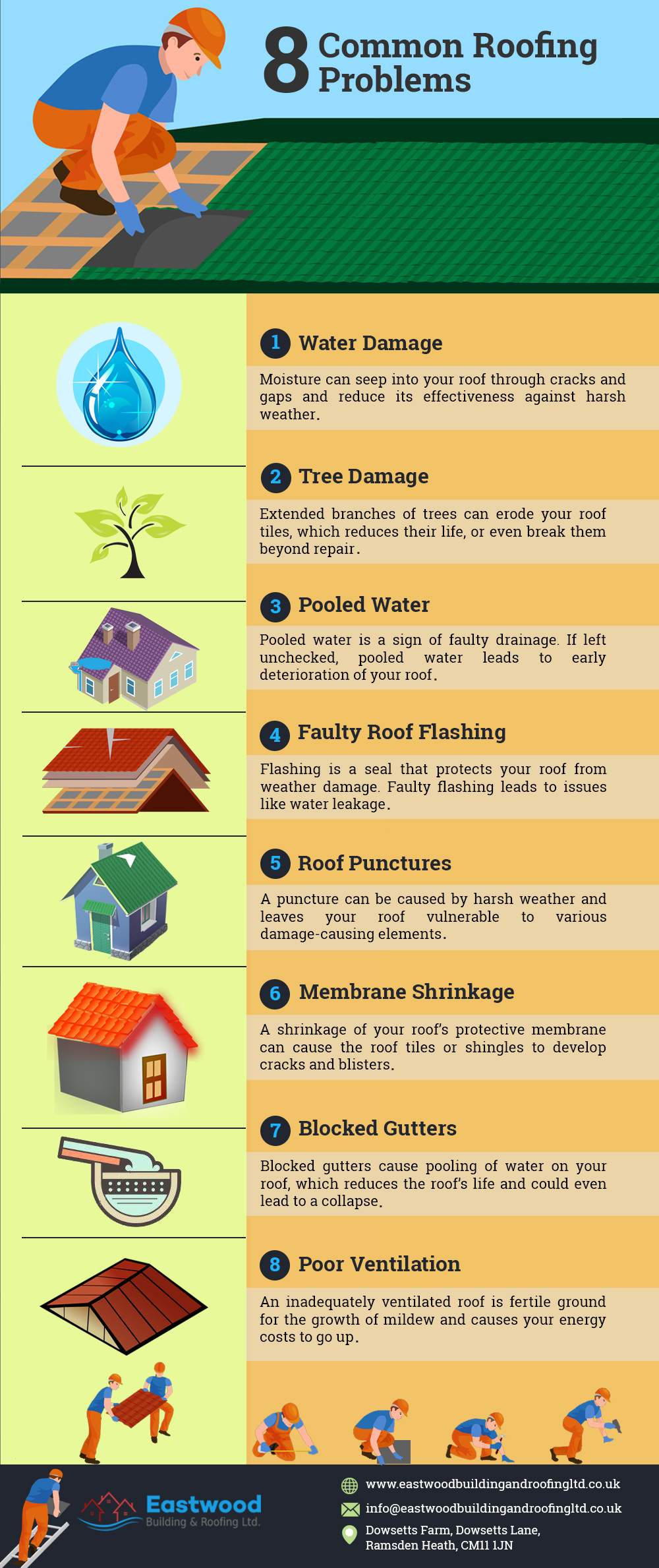Just How Weather Condition Impacts Your Roof Covering: A Newbie'S Guide
Just How Weather Condition Impacts Your Roof Covering: A Newbie'S Guide
Blog Article
Developed By-Sharpe Gordon
When it concerns your roofing, the weather condition plays a vital role in its total wellness and life expectancy. You may not recognize exactly how rain can bring about leaks or exactly how heavy snow can stress the structure. Also the sun's ruthless rays can deteriorate your roof products over time. It is essential to comprehend these effects, however what can you do to protect your roofing from the components? Exploring upkeep techniques and product selections could be crucial to guaranteeing your roofing system stands solid against whatever Mother Nature tosses its way.
Effects of Rain on Roof
Rainfall can be a quiet adversary to your roofing system, creating both prompt and long-lasting damage. When water seeps into splits or spaces, it can cause leaks, which might disappoint up right away. You may observe a stain on your ceiling, however by then, the moisture can have already jeopardized your roofing system structure.
Gradually, constant direct exposure to rain can compromise roofing products. Tiles may warp, crinkle, and even degenerate, leaving your home prone to further water invasion. Mold and mildew and mildew flourish in moist conditions, which can jeopardize your indoor air top quality and lead to health and wellness problems.
Standing water on your roofing system can also create significant issues. It includes unnecessary weight, boosting the danger of architectural failure. Plus, it can increase the wear and tear of your roofing products, making substitutes extra regular and pricey.
To secure your roof, ensure your gutters are clean and operating correctly to divert rain away. Routine evaluations can assist you catch possible problems before they intensify.
Taking these steps now can conserve you time and money in the long run, maintaining your home risk-free and completely dry.
Impact of Snow and Ice
When winter gets here, snow and ice can pose significant risks to your roof covering, just like rain. Built up snow can be fairly heavy, and if it doesn't glide off, it can produce a hazardous tons that your roof mightn't be able to sustain. This pressure can bring about sagging, leakages, or perhaps architectural failure.
Ice can also create problems, specifically with ice dams. When snow on your roof melts, it can move down and refreeze at the eaves, producing a dam that avoids appropriate drainage. Water then backs up under shingles, bring about leaks and water damages inside your home.
To safeguard your roofing system, it's necessary to maintain seamless gutters free from particles, permitting correct drain. Regularly evaluating your roofing for indications of wear and damages can aid catch concerns early.
If you observe a substantial amount of snow, take into consideration working with a professional to remove it safely. Keep in mind, it's far better to be proactive concerning snow and ice than to take care of expensive repairs in the future. Taking these steps can aid ensure your roof stands up to the winter months without major problems.
Sunlight and Temperature Level Obstacles
While you might appreciate sunny days, prolonged exposure to sunshine and extreme temperature levels can be damaging to your roofing system. UV rays can break down roof products over time, bring about bending, splitting, or fading. If your roof's shingles are made from asphalt, they may become fragile under intense heat, making them more susceptible to damage.
Additionally, high temperatures can raise the risk of thermal development. As materials expand during the heat of the day and agreement during the night, this continuous cycle can create stress and anxiety on your roofing, potentially triggering leakages or various other architectural issues.
You may additionally see boosted power prices as your cooling system works harder to combat warmth build-up in your attic room.
It's important to choose roof covering materials that can endure your local environment's temperature fluctuations. Light or reflective roofing can help in reducing heat absorption, while appropriate ventilation in your attic room can keep a balanced temperature.
view and upkeep can additionally catch problems early, ensuring your roofing system remains in optimal problem. By remaining proactive, you'll shield your investment and prolong your roof covering's life-span regardless of the difficulties posed by sunshine and temperature level extremes.
Final thought
Finally, comprehending how weather affects your roof is important for maintaining its stability and longevity. https://www.nwitimes.com/business/local/korellis-roofing-donates-labor-and-materials-to-boys-and-girls-club-in-gary/article_2018a21e-2e67-532a-9b3d-96089285713b.html can result in leaks, snow and ice can develop hefty lots, and extended sun direct exposure can create products to break down. By staying proactive with routine upkeep and picking the appropriate products, you can secure your roof from the elements. Keep in mind, a well-maintained roof covering not only improves your home's worth but additionally keeps you safe and comfortable for years to find.
